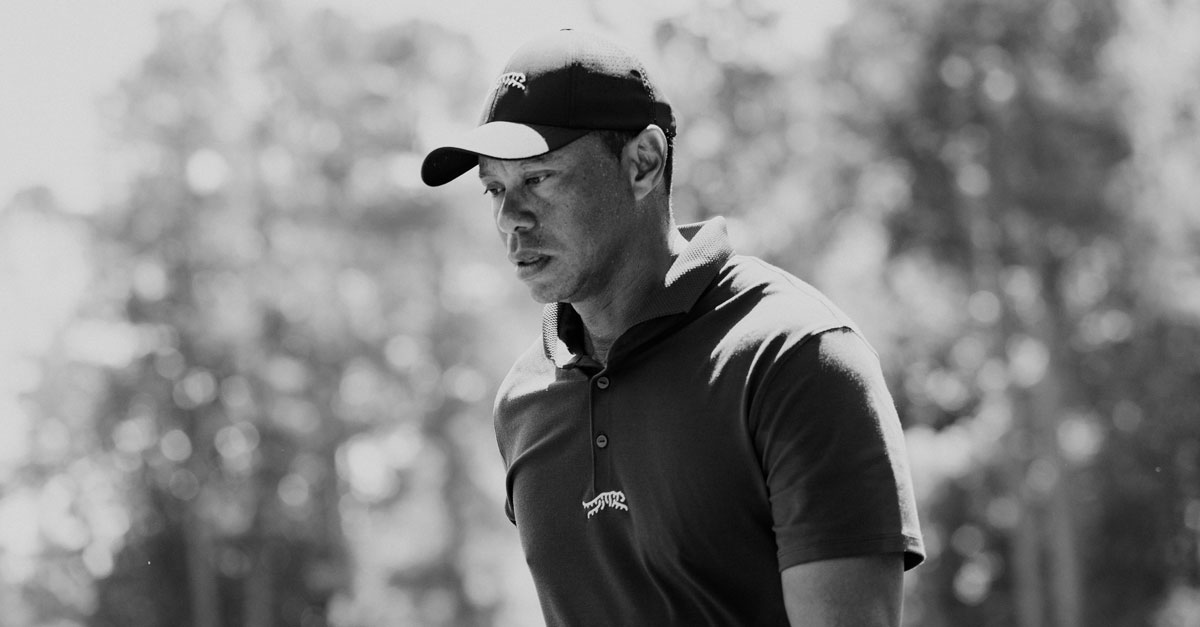How many swings do you think Tiger Woods has taken in his lifetime?
It’s a question that cannot be answered. We could make an educated guess, given what we know, but it would still be virtually impossible to come up with a number. Woods swung a golf club for the first time — according to his father — when he was just 11 months old. It would not feel like an exaggeration if you said a couple million swings followed. Perhaps even twice that many.
Bit by bit, through repetition, ambition, and iron will, he molded himself into one of the greatest athletes the world has ever seen. And every swing, whether it was a drive off the 18th tee in the final round of the Masters, or the first ball hit during warm-ups on a cold day in January, took a toll. Woods often did things with a golf ball that seemed mystical, but his body, and the way it deteriorated slowly over time, was a reminder that all athletic brilliance is finite, not eternal.
Every swing during a golfer’s career, even the earliest ones when there is no pain or compensation, brings them incrementally closer to the day when the body gives out, and no more swings can be made. The spine cannot twist or coil forever.
How many swings does Tiger Woods have left?
It’s an interesting question to ponder, especially if watching him ever brought you joy. When Woods revealed over the weekend that he’d undergone yet another back surgery — his seventh, this one to deal with a collapsed disc in his L4/5 vertebrae — it was not met with surprise as much as it was sadness. Even the usual optimism from his most ardent fans, the ones insisting we not write him off just yet, and that Tiger would once again come back and make his skeptics look like fools, was mostly absent. That this might truly be the end of his competitive career was greeted with acceptance instead of denial.
There will certainly be more swings in his future. How many, and how forceful they will be, will take shape in the months ahead. The game of golf is such an important part of his identity, his friendships, and his relationship with his son, Charlie, that he will keep swinging even if it does more damage. Tiger will rehab yet another injury, and push through pain and discomfort, to hold onto the game for as long as he can. It might be hard to watch if you haven’t arrived there already.
No one should tell him to quit or announce his retirement. Ten years from now, if he walks with a limp or cannot tie his shoes without help, it will be a difficult visual. But our discomfort is meaningless compared to his freedom to choose how to spend whatever swings he has left in the bank. That is one of golf’s enduring gifts. As long as you can stand upright, turn your shoulders, and draw a breath, you can keep swinging a club if you so choose.
Maybe Tiger will use his remaining swings in a series of two-man scrambles alongside Charlie. Maybe he’ll return for a last dance at the Masters, where he’s still never missed the cut as a professional. Maybe he’ll want one last stroll around the Old Course when the Open returns there in 2027. He could theoretically even extend his competitive golfing life on the Champions Tour, assuming his presence (even in a cart) can help keep it afloat.
The final chapter isn’t what any of us expected 30 years ago, and there is a sadness that is okay to acknowledge. It’s possible that some combination of science and guile will keep him swinging a golf club for another 40 years. It’s also possible his career is essentially over, and the focus now will be on protecting his quality of life.
There is already plenty of talk on what might have been if his body hadn’t come apart, piece by piece, if he hadn’t pushed himself to such extremes, or if he’d focused on longevity. Woods never caught Jack Nicklaus’ record of 18 majors, and he never nudged ahead of Sam Snead’s (admittedly dubious) record of 82 victories. Nicklaus won more green jackets, Ben Hogan more U.S. Opens, Walter Hagen more PGAs, and Harry Vardon more Open Championships. It’s surreal to remember a time when every one of those records felt like they would eventually be Tiger’s. Only fanboys and fools think they’re within reach now.
But you don’t have to mourn what didn’t happen. Appreciate, instead, what did.
Tiger Woods has swung a golf club several million times, and so many of those swings were ingrained with artistry and purpose. We can hold out hope there is still more to come.
But if there isn’t, tell yourself this: His body didn’t betray him. It was the instrument that made so many Sundays feel like you would remember them forever.








